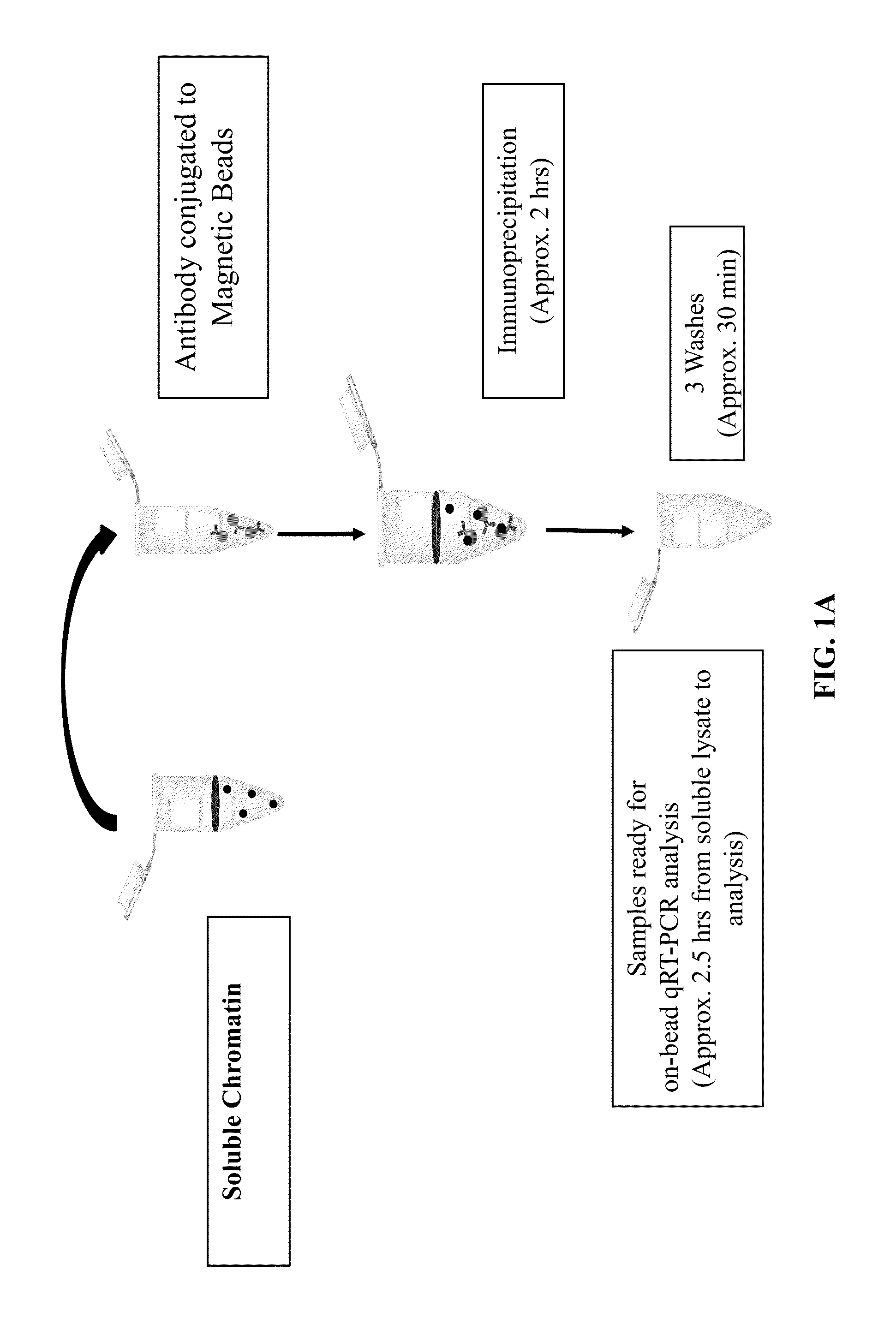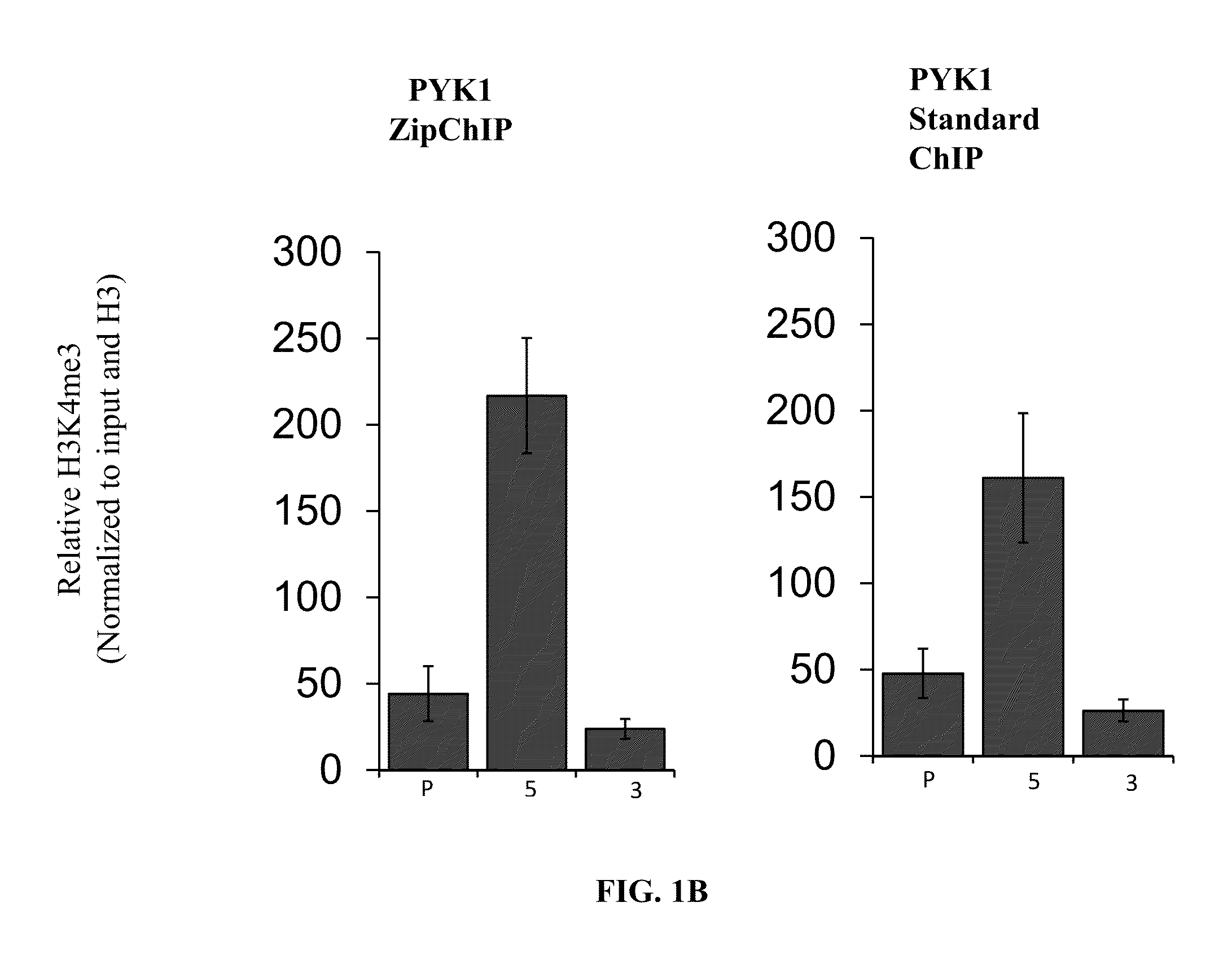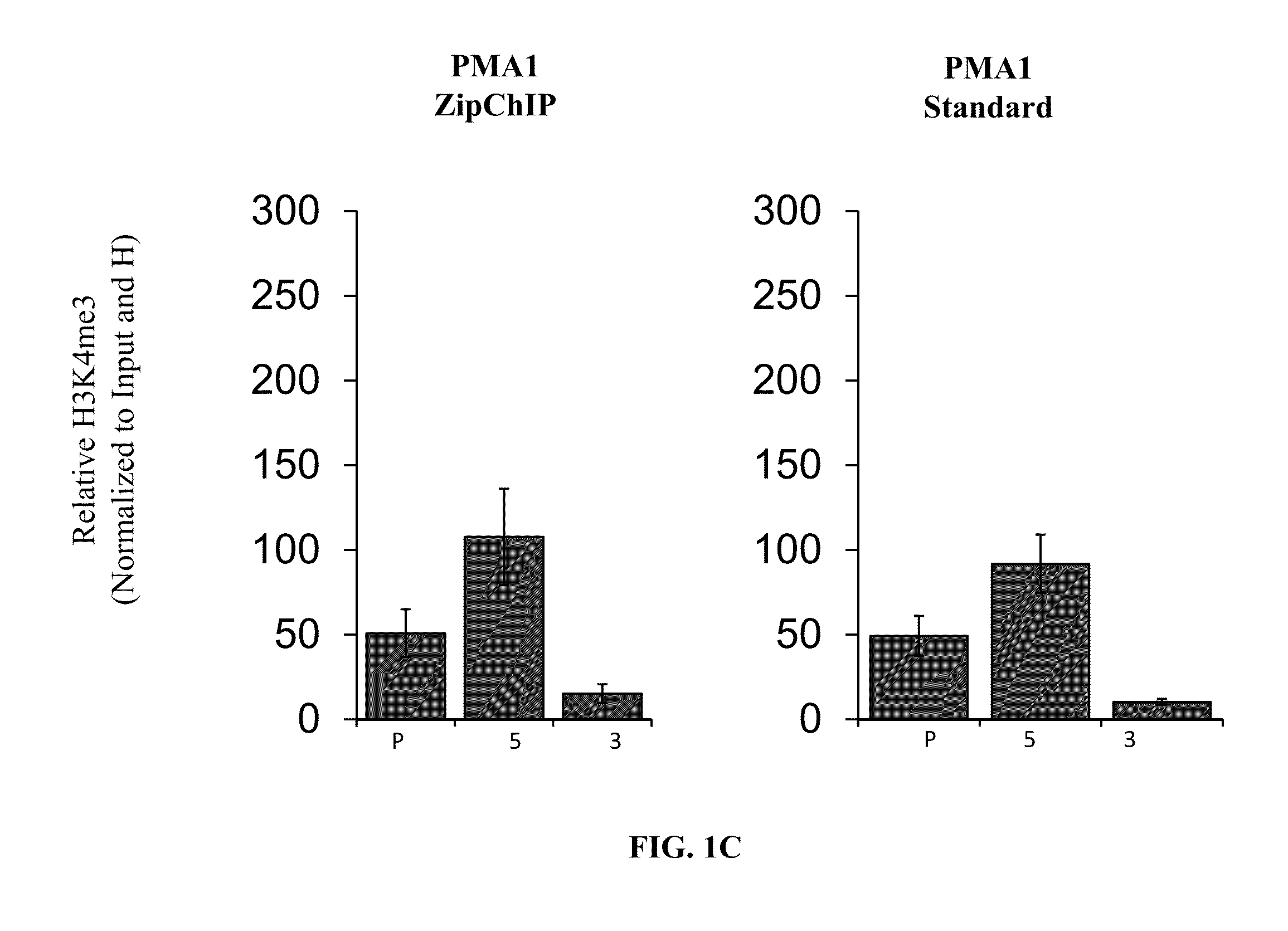Immediate chromatin immunoprecipitation and analysis
a chromatin immunoprecipitation and immediate technology, applied in the field of dna and rna analysis, can solve the problems of significantly reducing the sensitivity of the chip procedure, high experimental error rate, and time-consuming standard chip methods, so as to reduce the time of chip analysis, increase the amount of information gained, and high experimental error rate
- Summary
- Abstract
- Description
- Claims
- Application Information
AI Technical Summary
Benefits of technology
Problems solved by technology
Method used
Image
Examples
example 1
[0216]Verification of ZipChIP through analysis of the pattern of H3K4 trimethylation across actively transcribed genes. Many studies have characterized a specific pattern of H3K4 methylation across the open-reading frame (ORF) of actively transcribed genes, with H3K4 trimethylation (H3K4me3) being enriched at the 5′-ORF and transcriptional start site, H3K4 dimethylation (H3K4me2) localized in the middle of the gene, and H3K4 monomethylation (H3K4me1) enriched at the 3′-ORF. To establish that ZipChIP analysis is a reliable and robust method, ZipChIP was compared to a standard “long” ChIP method using an H3K4me3-specific antibody. The general scheme of the ZipChIP protocol is depicted in FIG. 1A. Yeast cells were grown to log phase and cross-linked with formaldehyde. After cell lysis and sonication, chromatin was purified. For the DNA input control, 6.25% of soluble chromatin was removed and processed with a standard PCR clean up kit (Qiagen). During the chromatin preparation, the H3K...
example 2
[0217]Histone demethylases, Jhd2 and Rph1, associate with the promoter, 5′-ORF, and 3-ORF of actively transcribed genes. Studies have described protein factors that have been difficult or nearly impossible to detect using the standard ChIP protocol. For example, it has been reported that the yeast H3K4 histone demethylase Jhd2 cannot be analyzed using standard ChIP methods. However, using the ZipChIP protocol, there was the ability to readily detect Jhd2 and the H3K36 histone demethylase Rph1 interacting with the promoter, 5′-ORF, and 3′-ORF of two actively transcribed genes, PYK1 and PMA1, with a signal that was significantly over the untagged Jhd2 and untagged Rph1 background signal, respectively as shown in FIGS. 2A-D. In contrast, a signal was not observed over background for either Jhd2 or Rph1 using the standard ChIP method as shown in FIGS. 2A-D. Referring now to FIGS. 2A-D, an α-FLAG antibody was used for immunoprecipitation of both Jhd2-3×FLAG and Rph1-3×FLAG for both ChIP ...
example 3
[0219]H3K4 monomethylation is enriched at the 3′-ORF for a subset of actively transcribed genes and this enrichment is lost in both rad6Δ and bre1Δ strains. Although genome-wide approaches can provide valuable initial information there are limitations with every technology. For example, reports of false positives due to sample bias and of low number of reads from certain targets necessitate validation and follow-up analysis of genome-wide localization data. As previously mentioned H3K4me1 has been shown to be enriched at the 3′-ORF of actively transcribed genes. However, this particular histone modification has been challenging to study using standard ChIP in yeast, so its biological role is not fully understood. To determine if ZipChIP can be used to detect H3K4me1 in genomic regions, both WT and set1Δ strains were cross-linked and soluble chromatin was isolated from these strains. The Protein-G magnetic beads were conjugated with a commercially available H3K4me1 antibody (Active M...
PUM
| Property | Measurement | Unit |
|---|---|---|
| size | aaaaa | aaaaa |
| temperature | aaaaa | aaaaa |
| time | aaaaa | aaaaa |
Abstract
Description
Claims
Application Information
 Login to View More
Login to View More - R&D
- Intellectual Property
- Life Sciences
- Materials
- Tech Scout
- Unparalleled Data Quality
- Higher Quality Content
- 60% Fewer Hallucinations
Browse by: Latest US Patents, China's latest patents, Technical Efficacy Thesaurus, Application Domain, Technology Topic, Popular Technical Reports.
© 2025 PatSnap. All rights reserved.Legal|Privacy policy|Modern Slavery Act Transparency Statement|Sitemap|About US| Contact US: help@patsnap.com



